Memory Of Memorials
Memories of a non existing country is easy to forgot. Unless there are some remains, which positioned in space reminds us of the past. The country in which I was born doesn’t exist anymore, it was Yugoslavia.
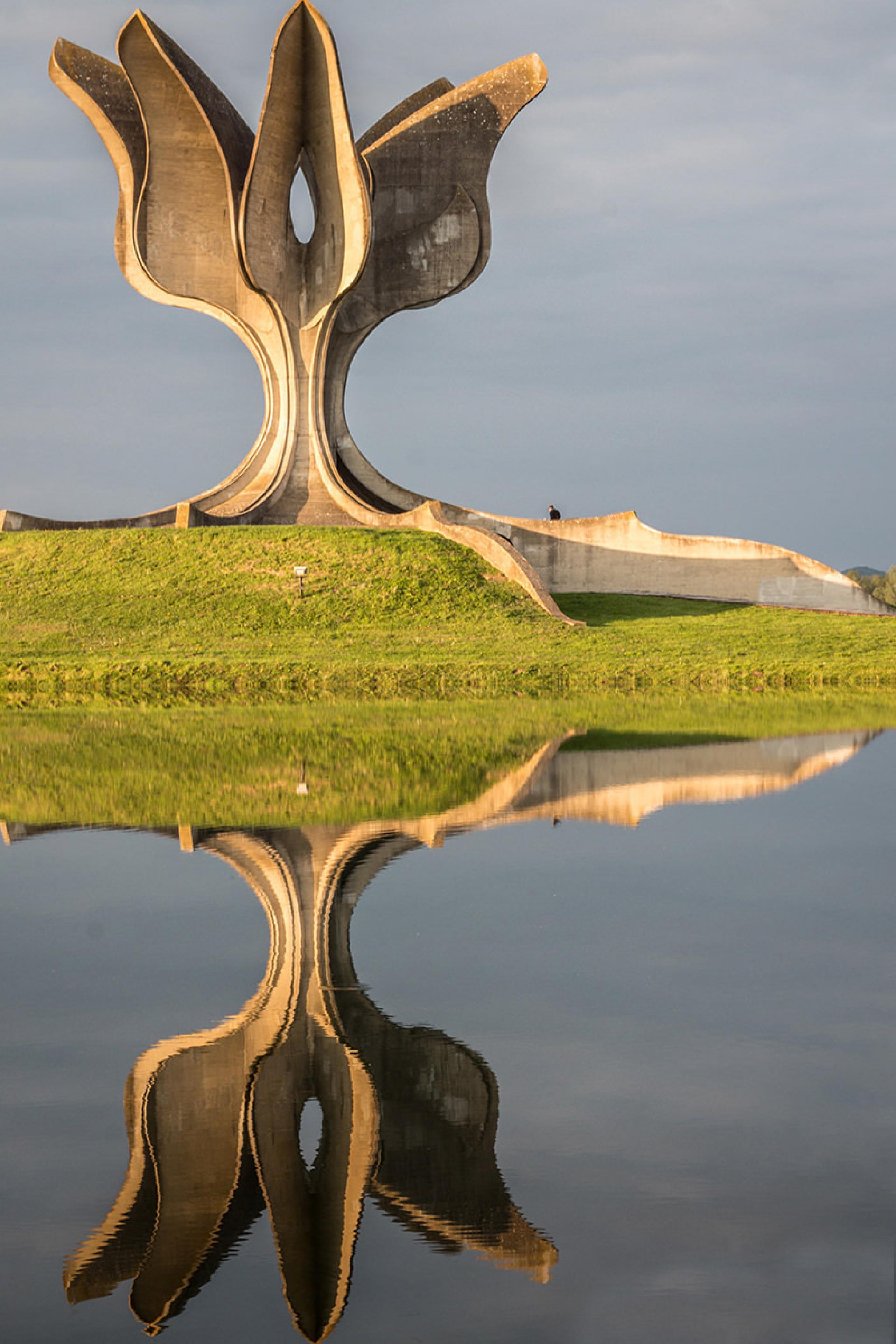
Stone Flower Monument at Jasenovac in Croatia by Bogdan Bogdanović (1966) is built over the ruins of the former forced labor and extermination camp and remembers thousands of victims killed by the fascist Ustaše regime in Croatia. | Photo via The Bohemian Blog
All across the territory of today’s new republics are standing bizarre and futuristic monuments from previous time. These monuments had been commissioned by ex president Josip Broz Tito in the 1960s and 1970s to celebrate the struggle of Yugoslav Partisan forces against the Axis regimes that occupied the region in WWII. Unspeakable deeds like concentration camps, mass murder, ethnic cleansing were committed and the partisan movement was a grassroots resistance to the occupation. The decay of Yugoslavia in 1990s affected on the abandonment of monuments and the history just repeated, this time without partisan movement and monuments of memories. During these Balkan wars many of the monuments were destroyed.
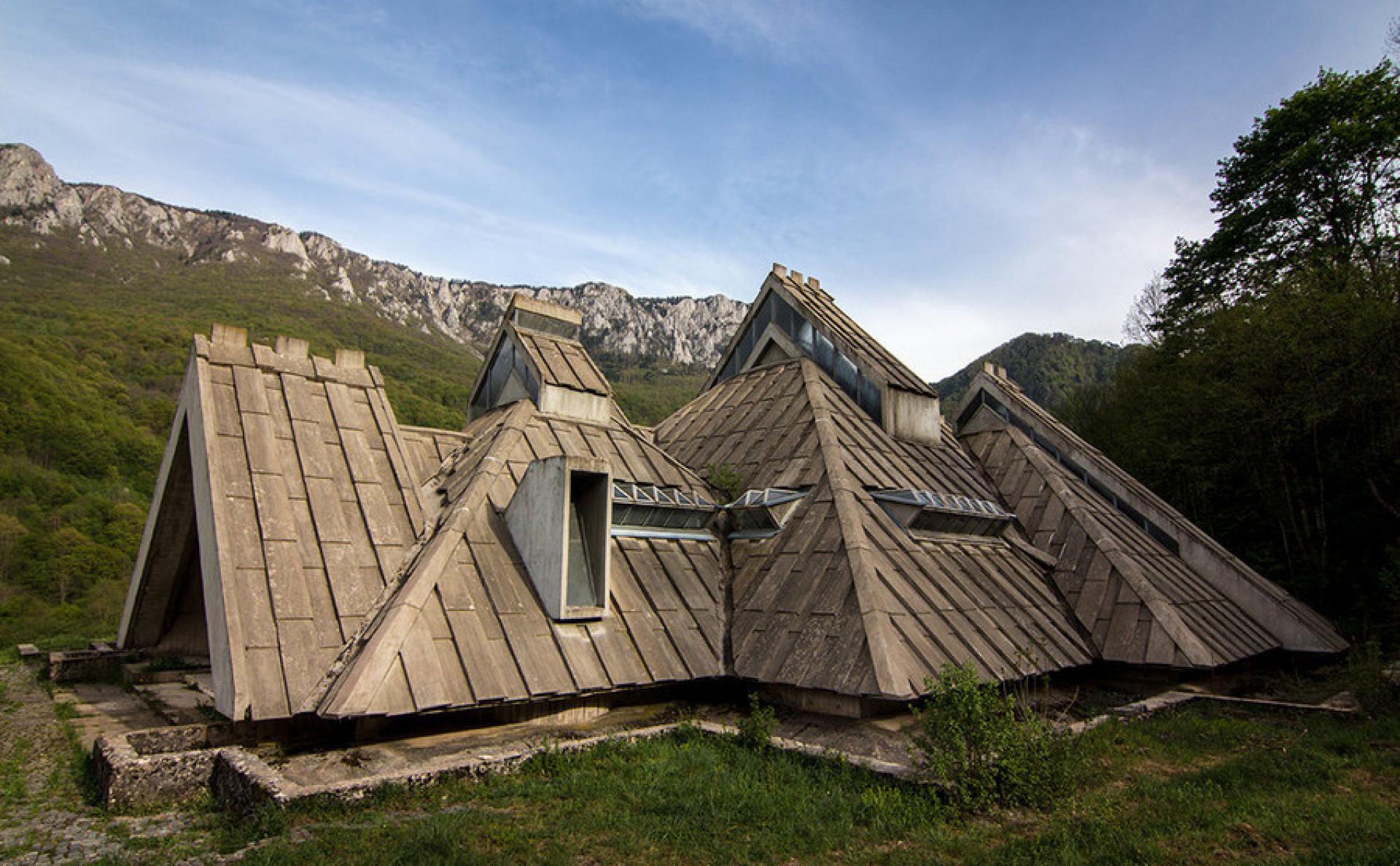
The memorial house at Tjentište in Bosnia and Herzegovina designed by Miodrag Živkovič and Ranko Radović in 1971. | Photo via The Bohemian Blog
Once one Serbo-Croatian language is today divided in two but still has the same word describing a monument - spomenik. It means a memory, which is present In sites as monuments sometimes combined with memorial houses.
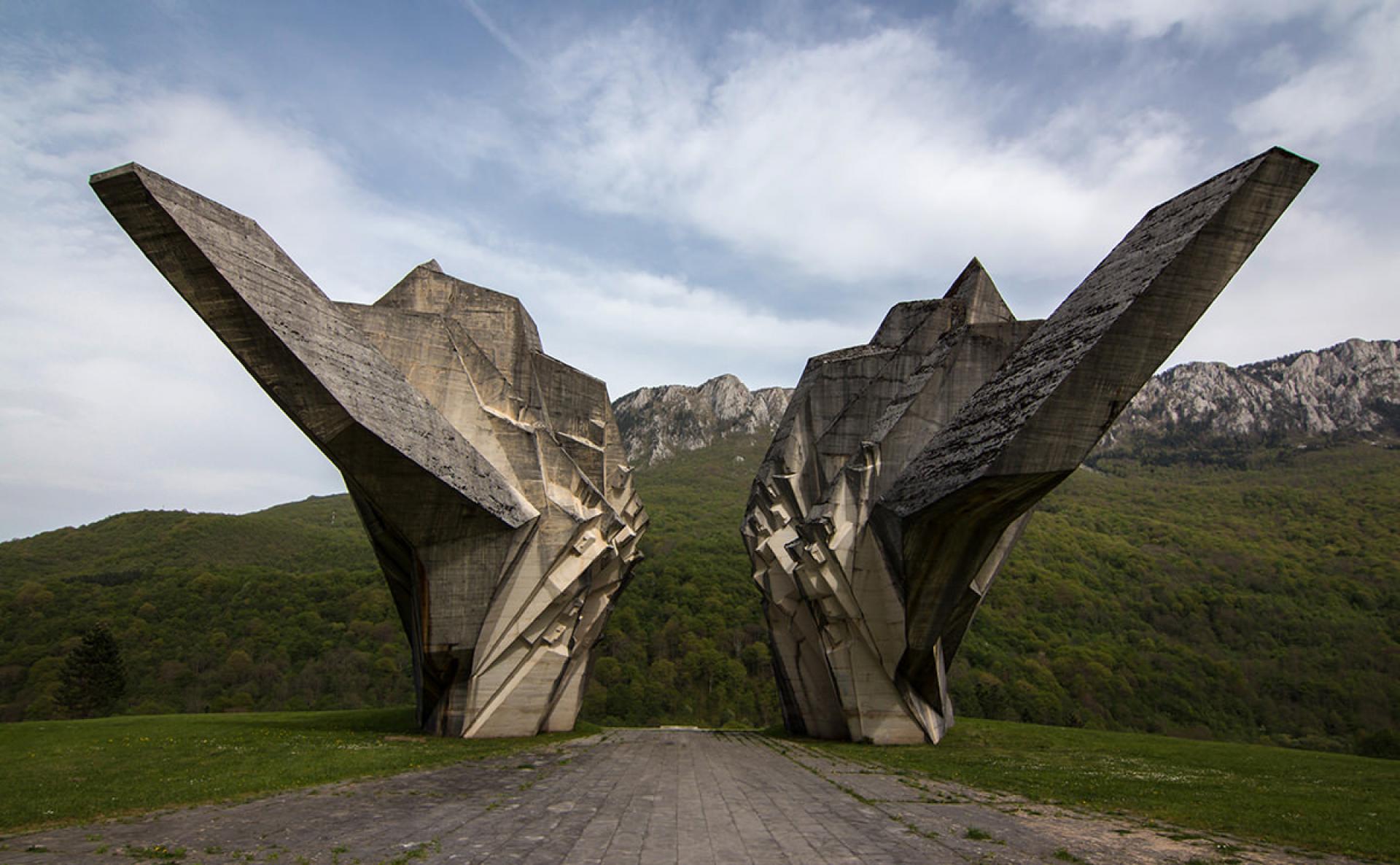
In the Valley of Heroes at Tjentište Živković and Radovic designed the monument commemorating the 1943 Battle of Sutjeska. | Photo via The Bohemian Blog
These monuments are not just communist propaganda, they captured styles and narratives of traditional communist architecture. In the article “Yugoslavian Partisan Memorials: Hybrid Memorial Architecture and Objects of Revolutionary Aesthetics” authors Gal Kirn and Robert Burghart explains “In the abstract formal language of the Yugoslav revolution, memorials instigate a certain sense of openness that allows for personal associations. They remain receptive to multiple interpretations, and they awaken fantasies. Their abstract vocabulary allows for an appropriation of meaning that bypasses official narrations, allowing access to the monuments even for people who disagree with their official politic.”
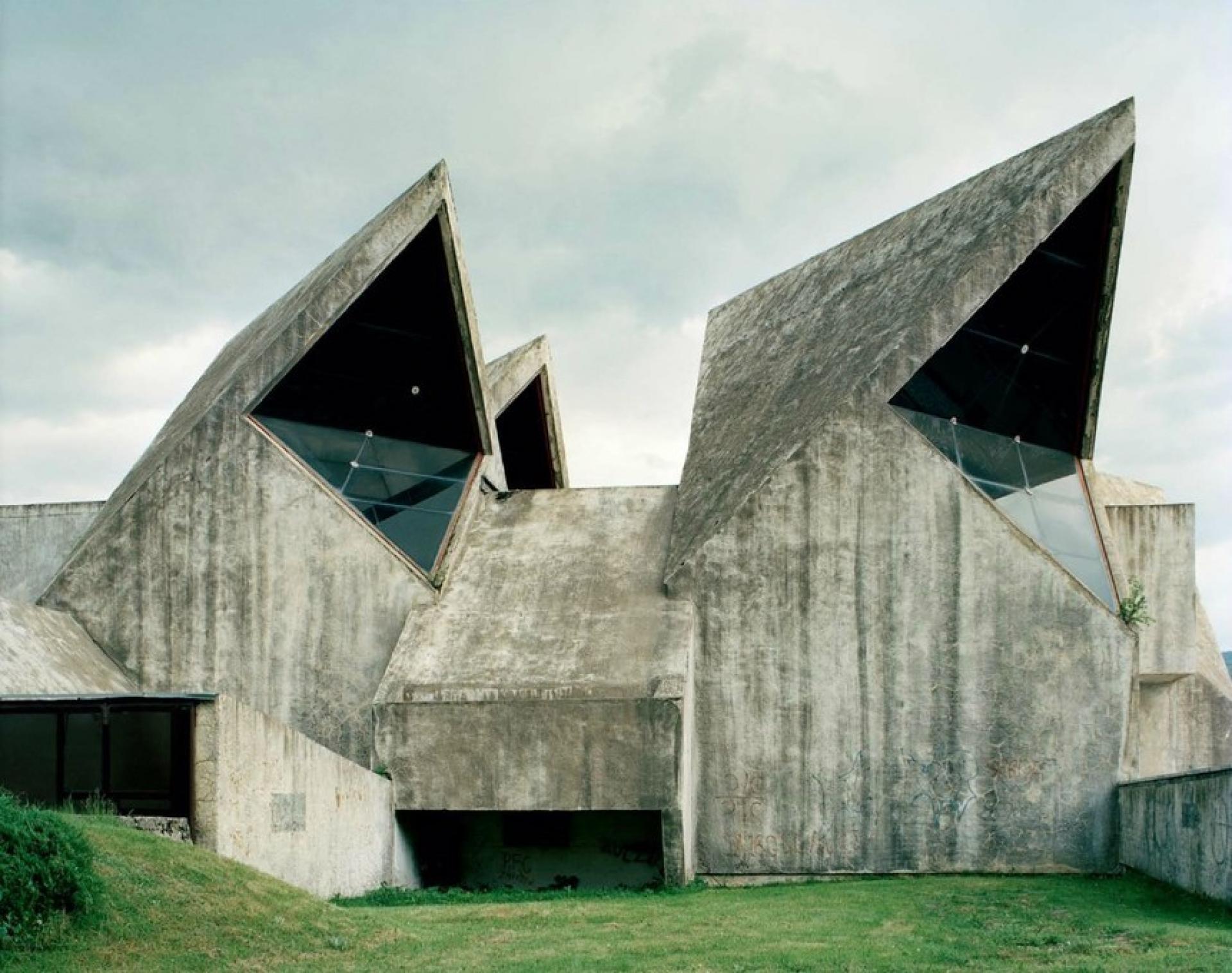
Cultural Centre at Kolašin in Montenegro was designed as an administrative centre by Marko Mušič (1976). | Photo by Jan Kempenaers
In memory of these locations as November 29th ex Yugoslavia territory celebrated their Day of Republic we talked to Gal Kirn, a Slovenian political philosopher and affiliated fellow at ICI_Berin and Niloufar Tajeri, architect working at Institute of Architectural Design, Art and Theory (EKuT) in Karlsruhe. In 2016 they started a project “Thinking Monuments to (Sub)Urban Riot” at Academie Schloss Solitude.
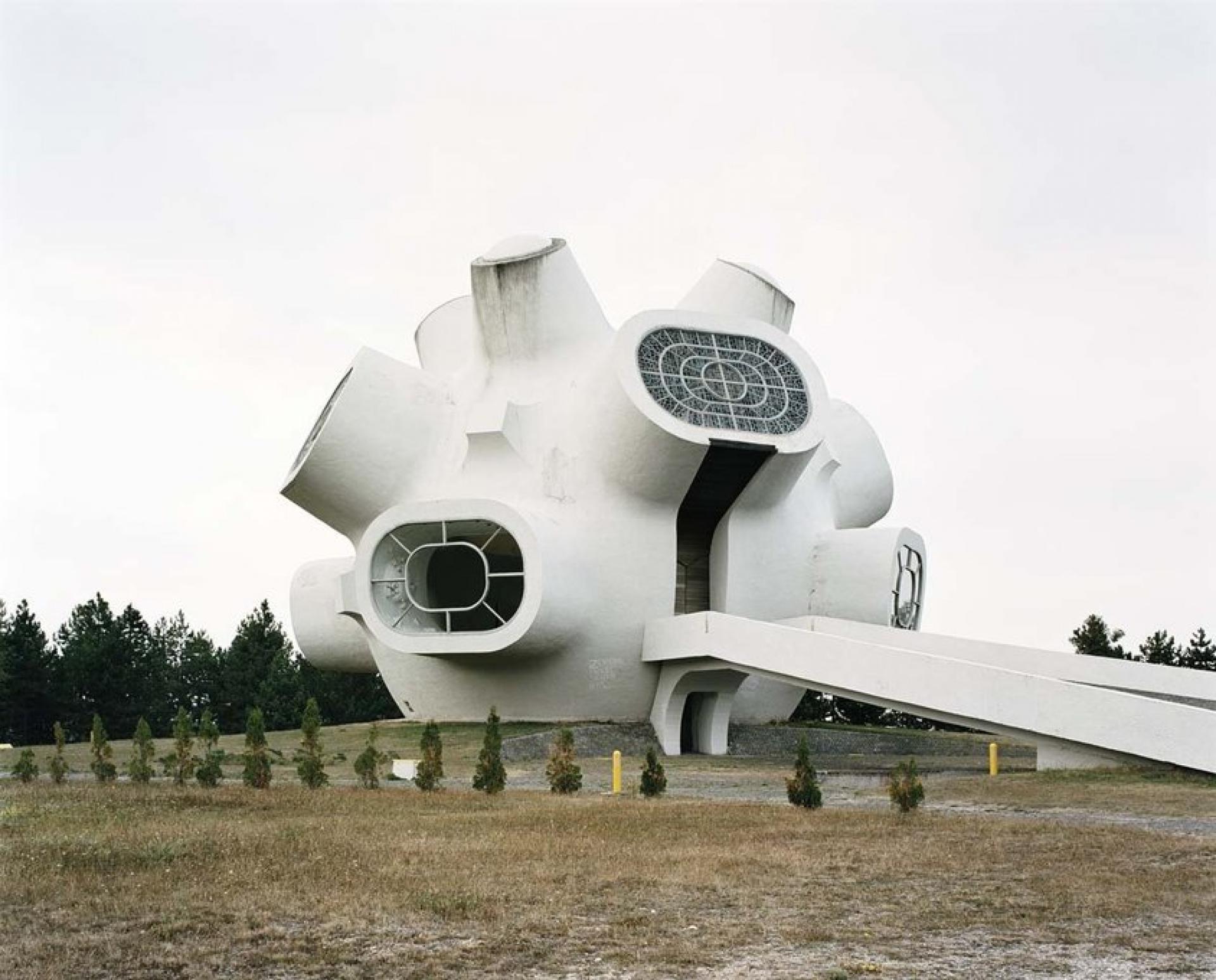
Makedonium by Jordan and Iskra Grabuloska (1974) at Kruševo in Macedonia was designed as a museum commemorating Ilinden Uprising of 1903 and the creation of Kruševo Republic. | Photo by Jan Kempenaers
The project Thinking Monuments to (Sub)Urban Riot wants to re-frame and re-articulate the demonized image and precarious existence of riots not only by an understanding of their deeper causes, but also by connecting them to the field of monumental practices.
Boštjan Bugarič: Back in time, socialist monuments were monumental - what can represent a monument today?
Gal Kirn/ Niloufar Tajeri: Yes, but let us really go back in socialist time first: then the belief in universal emancipation, fight against colonialism and capitalism were strong and real material forces. Furthermore, the time, when socialist Yugoslavia was born was based not on defeat and mourning but on victory over fascism and independent path to socialism (against Stalinism). This major political achievement was inscribed in the core of Yugoslav project, which was initiated during the WWII national liberation struggle. Liberation struggle started revolutionary process, which in material terms means that the masses of illiterate peasants joined communist and antifascist forces in the joint struggle against the occupation and in favor of another different Yugoslavia. This legacy was later appropriated by the Yugoslav state, however as observed above, it was also launched in the struggle against Stalin’s threat(s) and repositioning on the global map against (neo)colonial politics. Early monumental practices were more spontaneous and later followed realist genres, however in the more mature phase of Yugoslav self-management and late modernism, the Yugoslav monumentalism emerges (60-80s) and by today remains one of the last attempts to memorialize revolution, and with it foster a belief that another world is possible – even if in aesthetic, monumental, spatially-limited sense.
If we return this discussion to today, we see that we live (at the end of?) /in historical sequence that “end of history” and TINA (there is no alternative) reign supreme. In this light, the only reactualisation of monument, or monumental practice seems to be a turn into disappearance, precarious border between the visible and invisible, while in terms of political memorials we have a predominance over mourning, testimonies of totalitarian crimes and the industry of anti-communist museums and shows all around the former East. Evidently, we should acknowledge the necessary criticism that was launched against old school - caricature of modernism: its old pedagogical model, to-bottom approach, and enlightened belief in the good side of history – in this regard we find it particularly important that people like Esther and Jochen Geerz launched a set of activist and (counter) monumental practices that subverted old models of commemoration, and rather than delegating remembrance onto the monument, developed a more participative memorial form. In yet another turn, Hirschorn community monuments also trigger – not only by re-appropriating liberatory thinker (eg. Gramsci), but also the very definition of the monument for today.
Thus, we found it very useful to think on (a)new memorial practices, as a kind of productive tension between monumental (late modernist) attempts and counter-monumental strategies in order to address a topic that has long been demonized and excluded: (sub)urban riots.
BB: Can the memory of the monument be abandoned?
GK/ NT: This question can be answered in different ways, lets start with the above mentioned: memory can be abandoned if it is merely delegated onto the monument itself; secondly, as a sign of historical regression, monuments can undergo historical revisionism and instead of antifascist memory, and partisan memorial sites-monuments, in post-Yugoslav context we have been witnessing openly nationalist memory and to some extent even rehabilitation of local fascists collaborators. In certain way one can claim that monumentalism of the Yugoslav monuments to revolution at least slowed down this fascisisation of society… even if some were blown up, or decay in the nature, they still are remarkable objects and spaces, which cannot be so easily forgotten. Finally, in terms of our project thinking monument to urban riots – after we say, we really launch the call to monument and perhaps even engage in its construction – we have no problems to abandon the memory of the oppressed. However, under one important condition: once the political and urban exclusion of (sub)prolearianised and exploitation logic ceases to exist. But as long as we have injustices and structural violence caused by capitalist formation (which to a degree continued, permeated also socialist formation), we cannot expect that the monument of the oppressed should be left, buried, and abandoned. We believe that these, even if fragmentary, urban interventions, monumental strategies, and yes even sorts of monumental forms contribute to making visible the most invisible, and destituted »surplus« population that is not represented by anyone, but addressed by violence of police. This is also a reason why monument to suburban riots does not find a commission, or political stake-interest-holders… And why would anyone, or Society in general want to commemorate something that at the first glance destroying or at least shaking the very society itself (property, monopoly of physical violence etc).
BB: How is the architecture memory of the monuments in Yugoslavia represented?
GK: There are different more and less fashionable returns to the (late) modernist monuments, for example internationally the figure of Jan Kempenaers should be evoked, as he did a lot to open up this topic, however the reactions to his work contributed to the more aesthetes interpretations and questions: how come some totalitarian country could enable such monuments? This can be answered only by genius artists - sculptures who had nothing to do with partisan and God forbid socialist past, but are some beautiful souls that were actually dissidents. As we see this narrative fits into the (anti)totalitarian lenses that retrospectively emphasized the individual struggle and aesthetic approach. There has been also some exhibition projects which have large audience/influence and attempted to de-link monuments from any revolutionary politics, and cherished the “modernist” eternal core of the artwork, while forgetting on the ongoing memorial cleansing that is taking place across postYugoslav space. I do find Jan Kampaners contribution important in so far as he (re)covered still existing symbolic map of Yugoslavia that can be located on the monuments of revolution. If they were not as bombastic, one could caricature, the legacy of antifascism would be even more marginalized. There are also different types of works and groups that now engage with those monuments; some monument sites like in Mostar, the famous partisan cemetery from Bogdan Bogdanović, that have helped to (re)activated partisan memory and help to nurture ties between ethnically divided communities that have stayed very separated after the wars in 1990s. AKC Abrašević cultural organisation does cleaning actions, which bring youth together in a kind of old fashion of workers brigade, which has explicit political goal too. Memory of the distant past is here mobilized in the light of recent tragedies and ethnical cleansing. I would like to evoke the artists David Maljković who worked on the topic of Petrova Gora, but also Igor Grubić’s visual essays, while the collective WHW from Zagreb had worked on the first serious exhibition and catalogue of Vojin Bakić and opened up the topic such as rehabilitation of fascism to different audiences. Surely, in past few years there are some critical scholars that work on this subject in much more complex way.
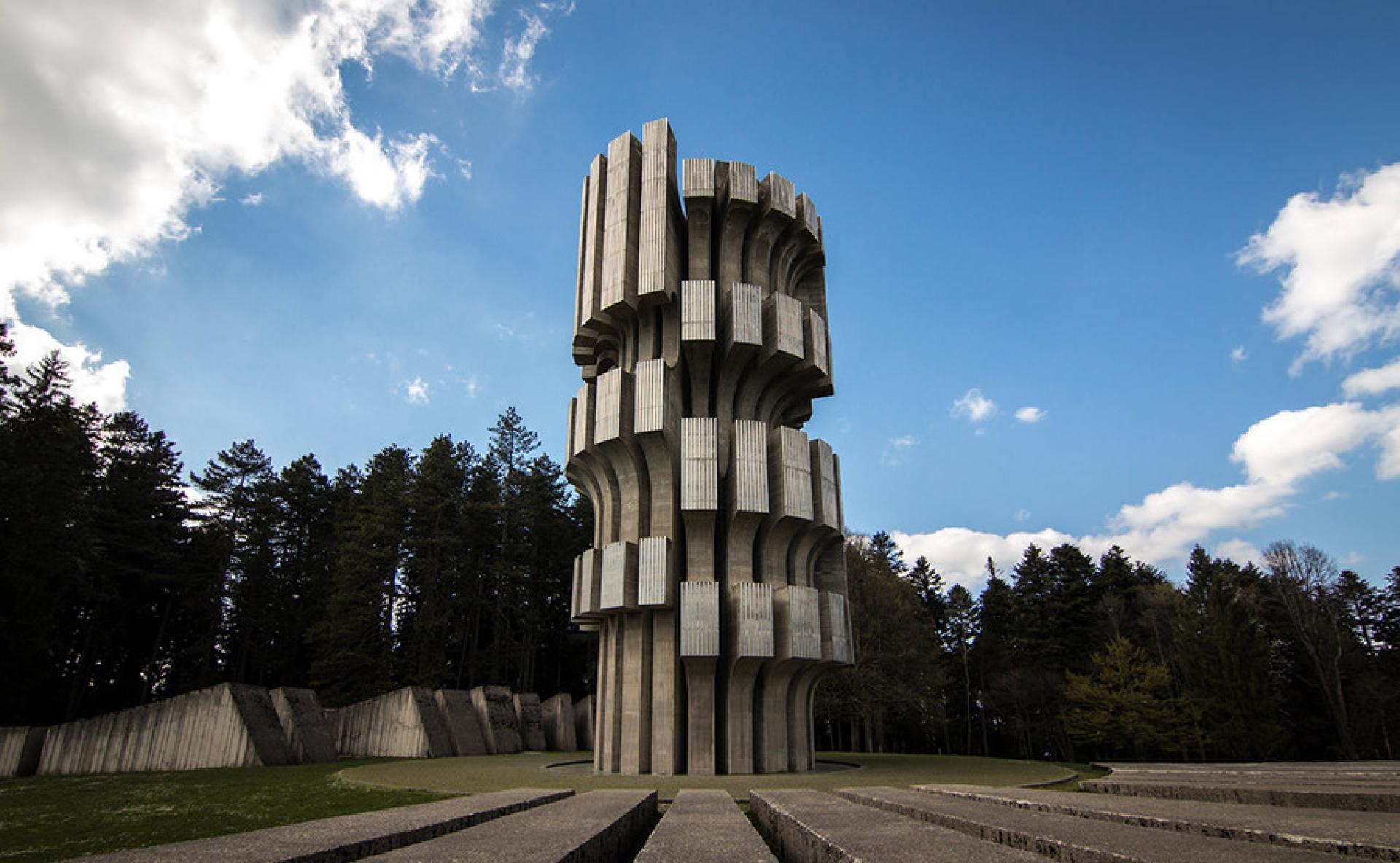
Monument to the Revolution at Kozara in Bosnia & Herzegovina by Dušan Džamonja (1972) presents a history of the 1942 Kozara Offensive, a battle that claimed almost 30,000 lives. | Photo via The Bohemian Blog
BB: To whom were commissioned the monuments?
GK: These structures were commissioned by very different agents, from the SUBNOR Veterans association to local and republican authorities, and were financed not by the federal state budget (just in rare cases), but distributed between self-management agents (workers’ collectives), republic and local authorities. In terms of design-architecture were picked from local architecture competitions, as was the case with Marko Mušič’s Memorial Hall in Kolašin, Montenegro. In some cases, once a design was approved, the federal government would show its support by offering funding for the project. Other times, the funds would come from within the individual republics themselves, and would be pitched further within the nearby community.
Not all of the monuments were funded by governments, the memorial site at Kozara, Bosnia, was paid for entirely in voluntary donations. These came from more than 50,000 people, with the largest donors listed on stone tablets around the complex.
BB: In which way you re-articulate the demonized image of riots and monuments? Is it possible to reframe the meaning of the monuments from the East with those from the West?
NT: Indeed there seems to be a silent complicity between these two topics: the monument is a very contested medium that has gone through major changes and ramifications throughout the 20th century, and became ubiquitous, while (sub)urban riots seemed to be contested even within political theory that favors units of analysis such as state, party, trade unions, social movements. It is generally believed that riots have no demands and bring only destruction, how can that stand in parallel to the monument that is generally believed to generate collective memory and even “reconcile”? However, when looking at the critical discourse and artistic practice around the topic of the monument, it has assumed a new purpose and form, for example when taking into consideration of Jochen Gerz – it no longer is limited to the totality of an official narrative, it is no longer the consolidation of consensus – but it started representing others, subjective views, and also served as a medium for dissent in society. This is why we departed from the thesis that a monument to riots needs to follow and formalize the form of riot; in other words it needs to become a dissenting monument to dissent.
The question how to navigate through different legacies from East and West is of course of our interest, when launching a call to monument. We believe that it is time to look ahead, not simply forget and abandon the contested aesthetic and political forms, but to intervene publicly by way of monumental strategies that could – in contradictory and unanticipated ways - address and trigger solidarities among the excluded on the one hand, but also elaborate new memorial practices navigating between monumental and counter-monumental strategies.
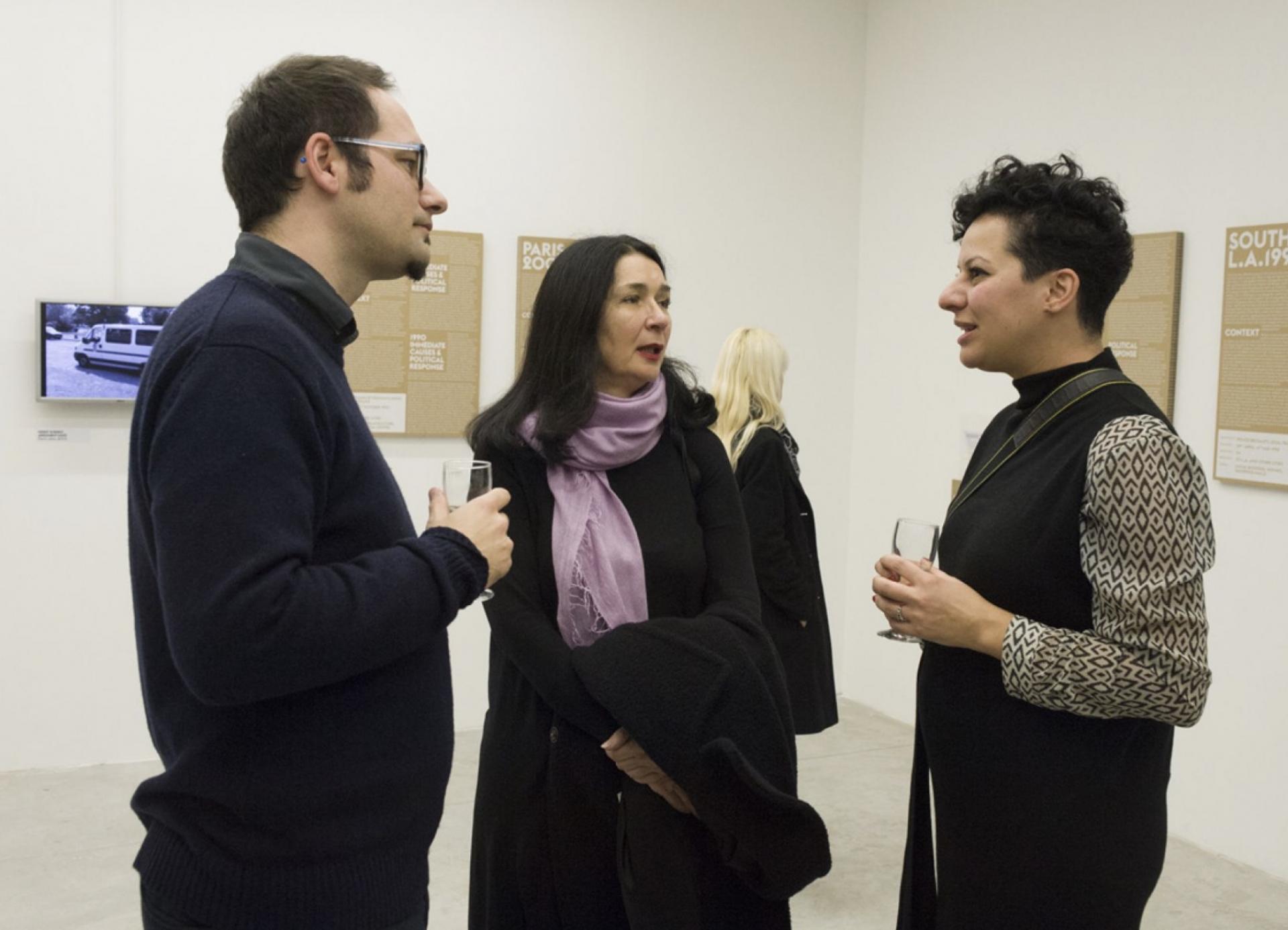
Gal Kirn, Zdenka Badovinac and Niloufari Tajeri
Gal Kirn is currently an affiliated fellow at ICI-Berlin, and holds a PhD in political philosophy from the University of Nova Gorica (Slovenia). In his hometown Ljubljana he was a member of the collective Workers’-Punks’ University (2003–2008), later on he was a researcher at the Jan van Eyck Academie in Maastricht (2008–2009), a research fellow at Institute of Cultural Inquiry Berlin (2010-2012), a fellow at Akademie Solitude (2015), and a postdoctoral fellow of the Humboldt Foundation in Berlin (2013–2016). He is a co-editor of the books Beyond Neoliberalism (Springer, 2017 with Marian Burchardt) Encountering Althusser (Bloomsbury, 2012, with Peter Thomas, Sara Farris and Katja Diefenbach) and Yugoslav Black Wave Cinema and its Transgressive Moments (JvE Academie, 2012, with Dubravka Sekulić and Žiga Testen). His book Partisan Ruptures and Contradictions of Market Socialism in Yugoslavia was published at Sophia (in Slovene).
Niloufar Tajeri is an architect based in Berlin. She taught at the Chair of Architectural Design, Institute of Architectural Design, Art and Theory (EKuT), Karlsruhe Institute of Technology, and is currently working on her dissertation focussing on the modernist housing estate “Sozialpalast/Pallasseum” by Jürgen Sawade. She was a fellow in the architecture section of the Academy Schloss Solitude. She worked as an editor and project manager for the Berlin based architecture magazine ARCH+ (2013), as well as for the Amsterdam based Volume Magazine (2007–2008). She carried out several projects in the realm of publishing and exhibition design. During her studies at the University of Karlsruhe, she worked as an architect and planner with the Aga Khan Trust for Culture in Herat and Kabul, Afghanistan.